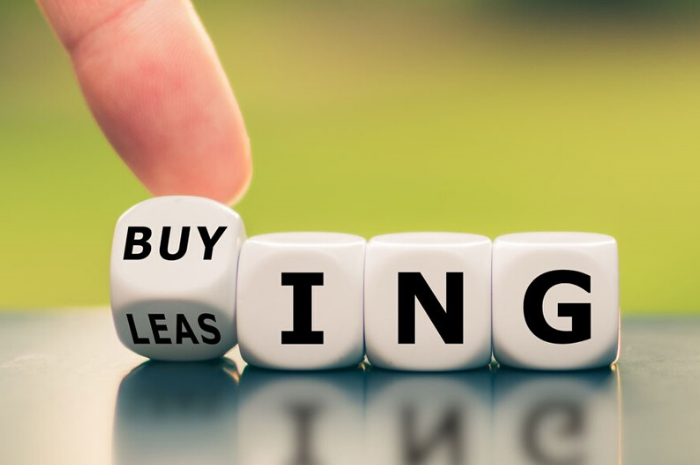Few people get into business with access to a vault stuffed with cash. In reality, it takes money to make money. Whether you're launching or growing, you need a location, furnishings and equipment, inventory and cash to pay your staff — to provide the service before you get paid. Raising capital is one of the biggest hurdles of startups and businesses on the grow. Use this guide to help you locate the options you can tap into that are best suited for your business.
Business term loan
This is the money you’ll use for your working capital, the things you need to make your business run. Depending on how you’ll use it (and the length of its useful life), lenders sort these loans into two categories: Intermediate-term and long-term loans.
- Intermediate-term loans have a lending period of one to three years. Often, these are used for things like opening a new location, buying equipment and covering the start-up cost of hiring new workers. The idea is you’ll use the increased revenue you’d gain from this new asset to make payments on the loan.
- Long-term loans have a lending period of 10-20 years or more, and are used for larger investments. For borrowers, they give entrepreneurs a financially feasible way to invest in facilities and large equipment. With the longer term, you get the benefit of a lower payment, over a longer time period.
The upside of a business loan is these have a fixed interest rate with a fixed payment — so you’re paying the same amount, month after month. Also, this loan is separated from your personal assets, so if something were to happen to your business, your personal assets are protected.
However, these loans are not easy to acquire for the newly established businesses. One thing bankers are weighing is the risk, so with the application comes a lengthy and rigorous approval process. While well-suited for a well-established business with a good track record, new entrepreneurs often find barriers in getting this type of loan.
However, even for the new entrepreneur, there are other ways to get the working capital you need to make your business run.
Equipment leasing
Most small businesses need at least some equipment to make their business run. This could refer to a fleet of vehicles for your landscaping company, heavy machinery and kitchen equipment for your downtown brewpub, or the computers and printers you’ll need to equip your office.
When getting approval for a loan becomes difficult, leasing can be the answer to get your business off the ground. With a lease, you’re paying a monthly fee to use the equipment for a specific amount of time.
While a lease and a loan are both forms of credit, the main difference with a loan is you own the equipment outright once you’ve made that final payment. With a lease, the equipment goes back to the owner; however, many leasing companies have options to purchase the equipment once the term of the lease is up.
Choosing between a loan and a lease isn’t always a straightforward decision, and it will depend greatly on the current financial position of your business, its cash flow, how long you’ll need the equipment, the tax advantages, and so on. For example, if you’re not certain you’ll need the equipment in five years, a lease can provide a simple exit strategy with no penalties, and no hassle of finding a buyer.
For a complete overview, read Leasing vs. buying: Which is best for your business?
Crowdfunding
For a certain type of business, crowdfunding can be an attractive option to raise capital, because you can raise money by appealing to a wide-open network of people. All you have to do is make a compelling case on your fundraising platform of choice, hit share, and then wait and see.
If you have the network, or one heckuva idea with enough sizzle to pique the interest of strangers, crowdfunding lets you leverage the power of the internet to get your business off the ground.
Obviously, the big upside to crowdfunding is you don’t have to repay the money. Basically, it’s a grant. Besides that, if your crowdfunding plea is eagerly shared by many, you’ll generate some much-needed buzz for your business, making this a great way to introduce your newly launched brand to the world.
However, crowdfunding is not without its setbacks and there’s plenty to consider.
Would you treat this as a straightforward call for donations, or should donors get something in return, like a company share? What if you don’t make your goal? With the tax implications, would crowdfunding be more of a double-edged sword?
Lines of credit
The other tool in your arsenal is the line of credit. When that big order comes in, but you don’t have the cash on hand to purchase raw materials and hire additional staff, there’s no need to go through a lengthy loan process. With a line of credit in your arsenal, you can say yes to the big orders, and take care of other day-to-day operations. You only pay interest on the balance, making payments as revenues come in.
A line of credit is a revolving loan. During the application process, you’ll need to demonstrate to your lender that your business has the cash flow to make those regular payments on your balance. In return, you’ll have the flexibility to access credit for short-term needs, as long as you don’t exceed your credit limit.
SBA loans
As a small-business owner, it can sometimes feel as though your quest to access working capital is reaching a dead end. You feel strong and certain about your iron-clad plan, but the bank still views it as too risky to grant the loan you want. Maybe your lender can offer a short-term loan, but you need one with a longer term and lower interest so you can stick to your plans. If crowdfunding can’t save the day, and your line of credit is not the appropriate source, what else can you do?
An SBA (Small Business Administration) loan could be just the thing to help you find a way. Though you can read all about SBA loans on a .gov website, these are not loans that come from the government.
- The bank issues the loan, however, the federal government backs a portion of the loan. That's a win for the lender because the loan is now less risky.
- SBA loans are a win for the borrower because they can usually get a lower interest rate at a longer term, freeing up more capital to pay bills and invest in their business.
For these reasons, SBA loans are seen as a powerful economic development tool that bridges the gap between entrepreneurship and capital.
If you work with a bank that’s an SBA-preferred lender, you can work through the application process more quickly, and get the answers you seek so you can move forward with your plans.
You know what’s best to grow your business, and the bankers at Minnwest Bank are there to guide your financing. We offer customized options and flexible terms to best meet your business needs. To get started, talk to one of our commercial bankers in your community.


